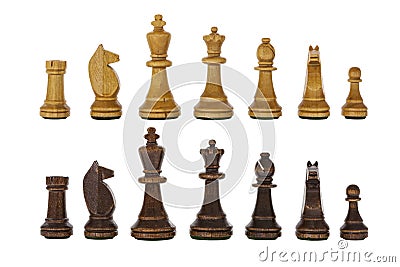

If you liked this post, you may also want to read other Chess guides on Chess Engines and checkmate patterns. I hope this guide on the different chess pieces helped you.
#Chess pieces how to
Having a slightly better pawn structure or even having one more pawn than your opponent often times makes the difference between winning and losing a match or even a Chess Tournament.įor more information on the how to use Pawns in Chess, visit the Pawn guide. However, it is crucial to develop your pawns and your overall pawn strategy. They are worth one point each in value, making them the least valuable piece in the game. It of course, always depends on the overall position of the other pieces on the chessboard.įor more information on the how to use Knights in Chess, visit the Knight guide. Trading a Knight for a Bishop in general, is a fair trade. This means in general, Knights have the same value as a Bishops, like all chess rules and principles, they can be broken and don’t always apply. Knights are worth three points each, just like the Bishop. Each player starts with two Knights and are generally the first of the minor pieces to be developed. Knights are the most complex piece on the board due to the way in which they move, which is an L-like direction. Each player has one Bishop on the light squared diagonal and the other Bishop on the dark squared diagonal.įor more information on the how to use Bishops in Chess, visit the Bishop guide. Bishops are among the minor pieces and are worth three points each, just like Knights.īishops move as many spaces as you want to move them on the diagonal the Bishop starts on until either your piece or an enemy piece in the way. BishopsĮach player starts with two Bishops, one light squared Bishop and one dark squared Bishop. Connecting your two rooks is crucial to maximizing their playing potential and your overall strategy, especially towards the endgame.įor more information on the how to use Rooks in Chess, visit the Rook guide. Using both Rooks together on the same file or rank is ideal. In the beginning of the game, they are essentially useless until other pieces are developed first. Valued at five points each, players starts with two rooks.

Lower rated players have a habit of attempting early Queen attacks because they’re fun and the Queen is so mobile, but you won’t see early Queen attacks from a Grandmaster playing another Grandmaster.įor more information on the how to use Queens in Chess, visit the Queen guide. This is why it’s general practice not to develop your Queen in the early part of the game. If your Queen gets captured, the game continues, but it is a massive blow to your chances of winning. Although the Queen is worth 9 points, it’s the second most valuable piece in your army. The Queen isn’t the most valuable piece, that would be the King. The Queen is your most powerful piece in terms of mobility. They can move forwards, backwards, left, right, or diagonally.įor more information on how to use Kings in Chess, visit the King guide. Kings are able to move one square in any direction. Kings have the least mobility of any piece with the exception of Pawns. Especially because of a possible King and pawn endgame where the starting position of your King often times determines who will win the game. In endgame, developing your King is actually very important. In general, you don’t want to move your king in the opening or middle of the game. Castling removes your King out of the center of the board where it’s most vulnerable to attacks and places it in a “castle” surrounded by pieces protecting it. It must be protected during the entire duration of the game, which is why castling is so important to do earlier rather than later. The King is the most valuable piece you have.


 0 kommentar(er)
0 kommentar(er)
